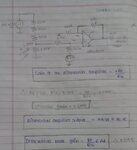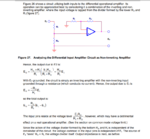satiz
Member level 5
Hi There,
I am planning to using Differential amplifier for AC voltage sense . I want formula to find V2 in the attached circuit.
My aim is to find the differential amplifier output. To get that I want to calculate Differential mode voltage
Vd= [Non-inverting input] - [Inverting input]
I need formula to find Inverting terminal volt and non inverting terminal volt.
Please help me.

Thanks regards
Satiz
I am planning to using Differential amplifier for AC voltage sense . I want formula to find V2 in the attached circuit.
My aim is to find the differential amplifier output. To get that I want to calculate Differential mode voltage
Vd= [Non-inverting input] - [Inverting input]
I need formula to find Inverting terminal volt and non inverting terminal volt.
Please help me.

Thanks regards
Satiz


